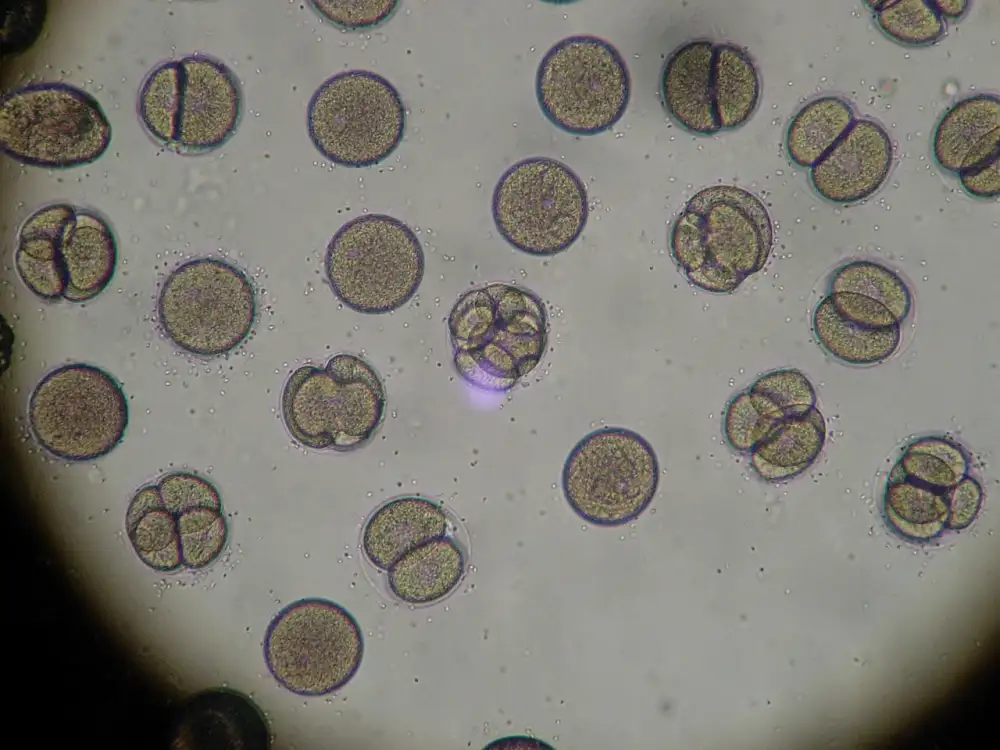Crack the Code: Master the Egg Test Method for Freshness

- Introduction to the egg test and its importance in determining egg freshness
- Step-by-step guide on how to perform the egg test at home
- Exploring different variations of the egg test and their effectiveness
- Understanding the science behind the egg test and why it works
- Common misconceptions about the egg test debunked
- Tips for interpreting the results of the egg test accurately
- Exploring other methods of testing egg freshness
- Conclusion emphasizing the simplicity and reliability of the egg test
Introduction to the egg test and its importance in determining egg freshness
Introduction to the Egg Test:
Determining the freshness of eggs is a crucial skill for any home cook or baker. The egg test method is a simple yet effective way to determine the freshness of an egg before cracking it open. By mastering this technique, you can ensure that your dishes are made with the freshest ingredients, resulting in superior taste and texture.
The freshness of an egg can greatly impact its quality and safety for consumption. As eggs age, they gradually lose moisture and carbon dioxide, causing the air cell inside to expand. This expansion indicates that the egg is no longer as fresh as it once was. By performing the egg test, you can gauge how old an egg is and make informed decisions about whether to use it in your culinary creations.
Stay tuned as we delve into the step-by-step guide on how to perform the egg test at home, explore different variations of this method, understand its underlying science, debunk common misconceptions, provide tips for accurate interpretation of results, explore alternative methods of testing egg freshness, and ultimately conclude on why the egg test is a simple yet reliable way to crack the code on egg freshness.
Step-by-step guide on how to perform the egg test at home
Step-by-step guide on how to perform the egg test at home:
1. Fill a bowl with water: Start by filling a bowl with enough water to fully submerge an egg.
2. Gently place the egg in the water: Carefully lower the egg into the bowl of water, ensuring that it is completely submerged.
3. Observe the egg's behavior: Watch how the egg behaves in the water. A fresh egg will sink to the bottom and lay flat on its side.
4. Assess for freshness: Take note of any changes in the egg's position or movement. If it stands upright on one end but remains at the bottom, it is still fresh but not as fresh as a flat-laying one. If it floats to the surface, discard it as it is no longer fresh.
5. Repeat with other eggs: Perform the test with each individual egg to determine their freshness individually.
Remember, this simple and quick test can help you ensure that you are using only fresh eggs in your culinary creations!
Exploring different variations of the egg test and their effectiveness
There are several variations of the egg test that can be used to determine freshness. One popular method is the float test, where you place an egg in a bowl of water. If it sinks to the bottom and lays flat, it is fresh. If it stands upright on the bottom or floats, it is not as fresh. Another variation is the shake test, where you gently shake the egg and listen for any sloshing sounds. If you hear sloshing, it means the contents have started to deteriorate. These variations provide quick and easy ways to assess egg freshness at home.
Understanding the science behind the egg test and why it works
Understanding the science behind the egg test is key to appreciating its effectiveness in determining freshness. The test relies on the fact that as an egg ages, air enters through its porous shell, causing it to gradually lose moisture and carbon dioxide. This process creates a larger air cell inside the egg. By gently placing an egg in a bowl of water, we can observe whether it sinks or floats. A fresh egg will sink to the bottom due to its smaller air cell, while an older egg will float due to its larger air cell. This simple but reliable principle allows us to confidently assess the freshness of eggs in our kitchen.
Common misconceptions about the egg test debunked
Common misconceptions about the egg test debunked:
1. Myth: The egg test only works for raw eggs.
Fact: The egg test can be used for both raw and cooked eggs. It is a reliable method to determine freshness regardless of the egg's state.
2. Myth: The float test is the only way to check egg freshness.
Fact: While the float test is popular, it's not the only method. Other tests like the shake test or candling can also provide accurate results.
3. Myth: Brown eggs are fresher than white eggs.
Fact: Eggshell color has no relation to freshness. It is determined by the breed of the hen and does not affect the quality or taste of the egg.
4. Myth: A slightly expired egg is still safe to eat.
Fact: Expired eggs can harbor harmful bacteria, even if they appear fine. It's crucial to discard any eggs past their expiration date to avoid foodborne illnesses.
5. Myth: A bad smell indicates an expired egg.
Fact: While a strong odor may indicate spoilage, it doesn't always mean that an egg is unsafe to consume. The best way to determine freshness is through proper testing methods.
By debunking these common misconceptions, we can ensure that everyone understands how to accurately assess egg freshness using the reliable and simple egg test method.
Tips for interpreting the results of the egg test accurately
Tips for interpreting the results of the egg test accurately:
1. Pay attention to the float: If the egg floats completely, it is likely old and should be discarded. If it stands upright or sinks to the bottom, it is fresh.
2. Observe the smell: A fresh egg will have a neutral odor, while a rotten egg will have a strong, unpleasant smell. Trust your nose!
3. Check for cracks: Cracked eggs are more susceptible to bacteria growth and should be avoided.
4. Consider appearance: A fresh egg will have a clear and thick white, with a yolk that is round and firm. Any discoloration or runny whites could indicate spoilage.
5. Use your senses: Trust your instincts when it comes to determining freshness. If something seems off or unusual about an egg, it's best to err on the side of caution and discard it.
Remember, these tips are general guidelines and may not always guarantee accuracy. When in doubt, it's better to be safe than sorry and choose another egg for your culinary creations!
Exploring other methods of testing egg freshness
While the egg test is a popular and reliable method for determining egg freshness, there are other techniques you can try as well. One such method is the float test. Simply fill a bowl with water and gently place the egg in it. If the egg sinks to the bottom and lies flat on its side, it is fresh. If it stands upright on the bottom or floats to the top, it is not fresh and should be discarded.
Another method is the shake test. Hold the egg close to your ear and shake it gently. If you hear a sloshing sound, it means that air has penetrated through the shell, indicating that the egg is not fresh. A fresh egg will not produce any sound when shaken.
Additionally, you can use your sense of smell to determine freshness. Crack open an egg and give it a sniff. A fresh egg will have virtually no odor, while a rotten or spoiled egg will have a strong sulfuric smell.
These alternative methods can be useful when you don't have access to a candle or flashlight for performing the traditional egg test. However, keep in mind that they may not be as accurate as the candle method in determining precise freshness levels.
By exploring these different methods, you can gain more confidence in assessing egg freshness and ensure that you are using only the freshest eggs in your culinary creations.
Conclusion emphasizing the simplicity and reliability of the egg test
In conclusion, the egg test is a simple yet reliable method for determining the freshness of eggs. By following a few easy steps, you can confidently assess whether your eggs are still good to use or if they should be discarded. This method has been used for generations and continues to be a trusted way to ensure the quality of your eggs before using them in your culinary creations. So next time you're in doubt about the freshness of your eggs, remember to crack the code with the egg test!
Published: 14. 11. 2023
Category: Food



